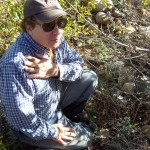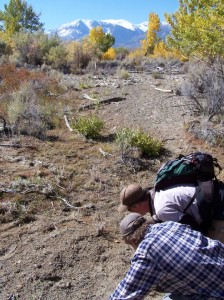
“What we are asking, what Mono Lake is asking all of us is ‘where are we going to draw the line?’ If we don’t share some water with Mono Lake what will be next? Will it be Lake Tahoe, will it be the Eel River, the Yukon? Will it be on and on until the last of our singing rivers and beautiful lakes are gone—because we’ve taken every last drop, we’ve watched the last waterfowl, and the last salmon, follow the California State emblem, the California Grizzly, into oblivion? It is a battleground in that sense: it’s asking us: ‘how much are we going to share with the earth?'”—David Gaines, co-founder of the Mono Lake Committee
You hear it all the time: there isn’t enough water. We are running out of water. But it isn’t true—there is no problem with water supply, in most cases. The problem is almost always too much demand. We are overextending ourselves. Poor decisions about land use, agriculture, and water use create problems. You see it in prehistory, where previous cultures overextended themselves. And we see it here in the Mono Basin, where maximizing the use of water resources pushed natural systems to the limit, stressed ecosystems and now requires great monitoring and restoration efforts. When scientists are asked what the limits are, we hear:

“When you divert more than 20–25% of the average annual water yield from a system, it gets harder and harder to make things work; over 30% of the water from a system, and you start throwing things out of the ecological bus.”—Bill Trush, State Water Board-appointed Stream Scientist
Living in a world of limits means that we must set our own limits on our water use—preferably well-below nature’s limits in order to preserve the wonderful ecological richness of our watery planet and the stability of our human communities. As David Gaines asked, where will we draw the line? It is up to us.
But what do you do when you are already overextended? Many rivers, lakes, and wetlands have been severely damaged or destroyed by excessive water diversions. The Colorado River delta has almost all of its natural flow diverted. Even here in the Mono Basin, about 70% of Mill Creek’s natural flow is diverted at Lundy Dam—a situation that needs our attention. 55% of the Owens River is currently exported to Los Angeles. The San Francisco Bay is impacted by diversions of half of its inflow during drier years–however in August, the State Water Board adopted flow criteria necessary to protect the public trust in the Sacramento-San Joaquin River delta and San Francisco Bay: 60–75% of the natural inflow is recommended during fall through spring.
Aggressive water conservation measures in Los Angeles have allowed the city to grow by 1 million people since the 1970s without an increase in water supply. As long as that growth continues, new water conservation measures need to continue to keep pace. Strategies such as xeriscaping, efficient irrigation, water recycling, and stormwater capture have potential for great savings. The Pacific Institute found that existing, cost-effective strategies can reduce demand for water by about 20% statewide (6–8 milllion acre-feet).
Actually accomplishing these water savings—as well as protecting our water supplies from pollution—is a huge task. But restoring and maintaining healthy ecosystems depends upon it. We need these ecosystems, not just for a nice day fishing or birdwatching, but in order to maintain the web of life around us that sustains us and provides for us.
So what can you, as a concerned resident of our water planet, do about all this? Learn about your watershed and the impacts upon it. Vote for ecologically responsible candidates and water policies. Don’t litter or pollute. Participate in river clean ups. Donate to organizations working to protect our water. Most importantly, reduce, reuse, and recycle applies to trash and energy as well as water—click here for some water conservation tips. And THANK YOU for your responsible water use! Together we can make a difference!

